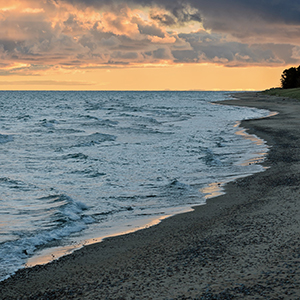Lake Maggiore: geomorphological genesis, lake-level evolution, and present and future ecosystems importance

All claims expressed in this article are solely those of the authors and do not necessarily represent those of their affiliated organizations, or those of the publisher, the editors and the reviewers. Any product that may be evaluated in this article or claim that may be made by its manufacturer is not guaranteed or endorsed by the publisher.
Authors
Lake Maggiore, the second deeper and larger south alpine lake, was selected as a model system to detect the potential damages on water resources, biodiversity and ecosystem health caused by different water levels during the lake-level regulation period (March to November). With a drainage basin exceeding an altitude difference of 4400 m, Lake Maggiore fills a deep valley floor whose bedrock reaches up to 700 m below the present sea level. The cryptodepression occupied by the lake was probably formed during the end of the Miocene and the Pliocene and was shaped successively during the Pleistocene glaciations. Lake Maggiore originated following the Last Glaciation, when it reached its maximum lake-level and extension just after its deglaciation. The mean secular lake-level progressively decreased throughout the Holocene, causing a gradual shrinkage of the lake because of the constant depositional input that created the fluvio-deltaic plains at the mouth of the main tributaries of the lake. The regime of the tributaries is of mixed type, with a spring maximum mainly due to snowmelt and an autumn maximum exclusively of pluvial origin. Water levels naturally tend to reflect the amount of rain or snow precipitation and are expressed through a double cycle: winter and summer characterised by low waters, and spring and autumn by high waters. In 1943, the need to use the waters of the great lakes to have water available in the less favourable periods, led to the construction of a dam at the Lake Maggiore outlet. This structure allows to store water during heavy rainfall or snowmelt periods. The accumulated water is then supplied during the irrigation periods to agriculture (spring and summer) and to industrial users (mainly in autumn and winter). The geomorphological genesis and the ecosystems description was focused on riparian, fluvio-deltaic, and ephemeral systems. For these ecosystems, their evolution considering the hydrological regime of the tributaries, the anthropogenic activities in the watershed and the effects of lake-level management since 1943, was also described. Considering the summer increase, between April and July, to +1.25 m (with possible peaks to +1.50 m) experimentally tested between 2015 and 2020, and the approval of the proposal to continue the test for the next five-year period (2022-2026), we finally emphasise the potential further reduction of reeds and natural habitats and the subsequent loss of biodiversity related to the plan of raise the lake-level to +1.50 m all year round.
Edited by
Silvia Quadroni, University of Insubria, Varese, ItalySupporting Agencies
INTERREG Italy-Switzerland project Parchi Verbano TicinoHow to Cite

This work is licensed under a Creative Commons Attribution-NonCommercial 4.0 International License.






